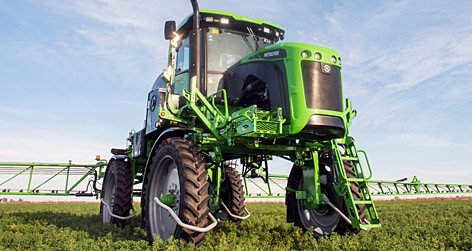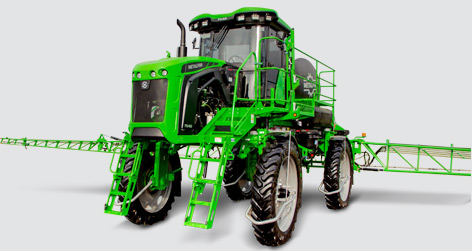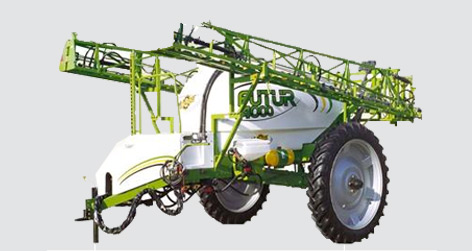"Excellent cabin comfort and ease of operation. High traction efficiency and ""climbing"" capacity – optimal performance on ""rolling"" terrain. Great fuel economy vs hydraulic transmission machines (up to 50% or less) Lower cost of maintenance vs water (up to 10 times lower) Excellent bar stability – best application quality Higher working capacity at lower cost (bars up to 41 m in steel) Simple and robust machine Lighter machine for less soil compaction Configuration with various options for precision agriculture."

The company was founded in 1974 in the town of Fortín, Córdoba Province (Argentina). It first produced trailed sprayers before releasing its first self-propelled sprayer in 1979. In 1993, it moved its operations to the city of Marcos Juárez to take advantage of the facilities necessary to increase its production. In 2001, Metalfor expanded regionally, installing a factory in Brazil in the city of Ponta Grossa, Paraná. In 2003, it opened its second industrial plant in Argentina, located in the city of Noetinger, Córdoba Province in a factory that it purchased from AGCO. In July 2017, the company was sold to a business group in the city of Marcos Juárez with more than 80 years of industrial experience. In Argentina, it has a direct sales network made up of 23 stores strategically distributed in the main agricultural regions of the country, in addition to more than 20 independent dealerships. Since its inception, the company has been experiencing continuous growth, the uninterrupted evolution of its products, and the consolidation of the Metalfor brand. Metalfor is a leading company in Argentina's competitive agricultural machinery market, with the largest stock of self-propelled sprayers in the country and a vast line of products that includes fertilizers, hoppers, tank trailer/mount.
Metalfor began exporting in 1998 with the shipment of the first self-propelled sprayer to Uruguay along with a mounted tank/trailer/trailer or tank mount. By the mid-2000s, the brand was already established in neighboring countries with a presence in most Latin American markets. At the end of that decade, it began its expansion in Eastern Europe, the Eurasian Union, and South Africa. In the last decade, it sent products to other markets in Africa, totaling 24 export destinations. 5- Export destination markets Bolivia, Botswana, Brazil, Bulgaria, Chile, Colombia, Cuba, Ecuador, Ghana, Israel, Kazakhstan, Mexico, Mozambique, Nicaragua, Nigeria, Panama, Paraguay, Peru, Russia, South Africa, Ukraine, United States, Uruguay and Venezuela



 54 (3472) 425894
54 (3472) 425894






